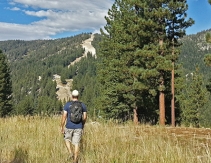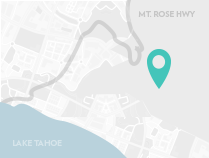Update as of October 22, 2015:
On Wednesday, October 21, 2015, the IVGID Board of Trustees approved the Diamond Peak Master Plan dated August, 2015 as amended by the Diamond Peak Master Plan Community Steering Committee recommendations. The members of the committee are listed below:
| •Bill Echols | •Robert Olmer | •Jess Jameson |
| •Al O’Connor | •Brian Hrindo | •Eric Severance |
| •Liz Harrell | •Steve Pulver - President, Bitterbrush II HOA | •Andrew Jaine – President, Upper Tyrolean HOA |
| •Bruce Simonian | •Shane Johnson | •Charlie White |
| •Judith Miller |
Visit the Master Plan Update Process page for more information or sign up for the Master Plan email list to receive updates.
Frequently Asked Questions
What happens if the Diamond Peak Master Plan is accepted?
The Board will direct Staff to begin due diligence for Phase One to present to the community. The first steps for Staff would be to plan community workshops with IVGID and the various local and regional agencies, further refine Phase 1 with analysis vetted by the community and Board, and look at the feasibility of proposed summer activities. Community input will insure that we are staying consistent with our community values and our regulatory agencies’ requirements. Acception does not assume that all of the features in the Plan will be constructed. This proposal is consistent with types of improvements made at the ski resort from the past decade.
What would happen if the Master Plan document isn’t accepted?
Diamond Peak would continue to work off of the 1986 Master Plan that is outdated and ineffective for planning purposes. Improvements would have to be done one at a time without the benefit of pre-planning.
Why implement summer operations?
Adding summer operations at Diamond Peak creates a great opportunity for the whole community; IVGID has the chance to contribute to employment stability, recognize and deal with the implications of climate change, and stay competitive in the local market. We feel it is our fiduciary responsibility to look at these options.
Why is Diamond Peak using the SE Group as the planning group for the Master Plan? What qualifications do they have?
The SE Group has over 56 years of experience and was the first in the country to help specifically with ski resort planning. It has worked with all major ski resorts in the country, including projects for Mt. Rose, Heavenly, and Squaw Valley/Alpine Meadows and has developed environmental entitlement solutions for resorts like Breckenridge Ski Resort and Arapahoe Basin.
The SE Group specializes in the planning and design of resorts with a focus on environmentally fragile sites that are constrained by sensitive ecosystems, high elevations, steep slopes, and wetlands. These places are guarded by stakeholders with a passion for the place and an emotional investment in its future.
In 2013, the SE Group came out and did an evaluation of the potential at Diamond Peak for both winter and summer. After the evaluation, SE Group gave a presentation to the Board highlighting the need to update the resort’s 28-year Master Plan. The Board approved Staff to use the SE Group for the development of a new Plan.
The SE Group maintains offices in Idaho, Utah, Colorado, and Vermont. For more information about the SE Group, visit http://www.segroup.com
Can you tell me more about the process once the Plan is accepted?
SE Group (if hired after Board acceptance on 9/10) would take the lead on the approval process. Special NEPA and EIS studies will be needed to complete the approval process through the TRPA, US Forest Service, and Washoe County. Diamond Peak and IVGID have full control of the Plan; the SE Group helps with the details.
I keep hearing that Diamond Peak wants to spend “18.2 million dollars” on this Plan. Is that true?
The Plan is split out into four Phases, with Phase 1 costing $4.2 million dollars which could be funded by other sources (supported with the community involvement process) not impacting the Recreation fee. Subsequent phases will not be built without the revenue goals generated from Phase 1. The “18.2 million” figure is irrelevant without the success of Phase 1.
I’m most interested in the backside lift or the rebuild of Snowflake Lodge being built first. Can that be changed in the Plan?
The Master Plan is a conceptual document where parts are subject to change. However, the financials are predicated on the current phasing. Rebuilding Snowflake Lodge is most likely to require lengthy studies and approvals while also needing more upfront capital (see Phase 2), which is why the summer revenue-generating activities were frontloaded in Phase 1. While there is interest in moving Phase 4 (expanding the backside terrain) up in the Plan, it’s difficult to define a ROI on winter improvements, although expanding the resort’s terrain by over 50% will have a positive impact on skier visits.
What is the difference between a canopy tour, zip lines, and their costs?
A canopy tour is a series of zip lines that goes through the treetops usually in a two- to three-hour guided tour. A zip line is typically just one "zip" (like Heavenly’s current zip line). It is important to note the difference when comparing rates for a zip line or canopy tour. Smugglers’ Notch Canopy Tour and Treetop Obstacle Course Videos: http://www.smuggs.com/pages/summer/outdoor/canopy-tour.php
What is the difference between an alpine coaster and a roller coaster?
A mountain coaster is specifically designed to be close to the ground and run smoothly and quietly down the mountain through the trees on polyurethane wheels. It consists of individual cars that carry 1-2 people. The cars are connected to rails, and riders are in control of the velocity as they coast down the track. Check out Breckenridge's Alpine Coaster here: https://www.youtube.com/watch?v=aos70dpNZ0Y
I’m concerned about the traffic in the area. How is that going to be handled?
The summer operations will create a different traffic flow than in the winter; in addition, fewer people are expected, on average, each day of summer operation. During the winter, people tend to show up all at once in the morning and leave at the same time in the afternoon. Since the average stay is shorter in the summer, people will arrive on and off throughout the day without the big surges like we see in the winter. In addition, we average about 2.3 people per car in the winter, and in the summer we expect almost 4 people per car, due primarily to the diverse, family-friendly oriented activities offered.
If you have any questions that you would like to have addressed in this FAQ sheet, please email sgh@ivgid.org to be evaluated.
Visit the Master Plan Update Process page for more information, or sign up for the Master Plan email list to receive updates.
Additional Resources:
UC Davis Tahoe Environmental Research Center “2014 State of the Lake Report” (Aug 2014)
http://terc.ucdavis.edu/stateofthelake/
UC Davis Tahoe Environmental Research Center “State of Climate Change” (2013)
http://terc.ucdavis.edu/docs/state_climate_change.pdf
RGJ “Scientists scrutinize Tahoe’s changing shore” (Aug 15, 2014)
North Lake Tahoe Bonanza Editorial: What does the future hold for Tahoe-Truckee? (August 5, 2014)
http://www.tahoedailytribune.com/northshore/12485815-113/tahoe-tourism-truckee-community
Bonanza Articles by IVGID General Manager:


